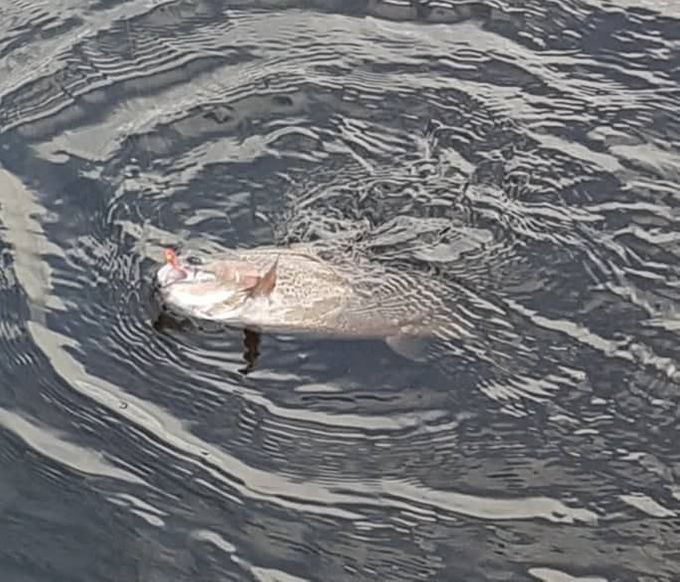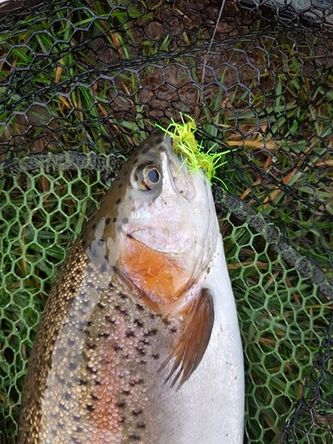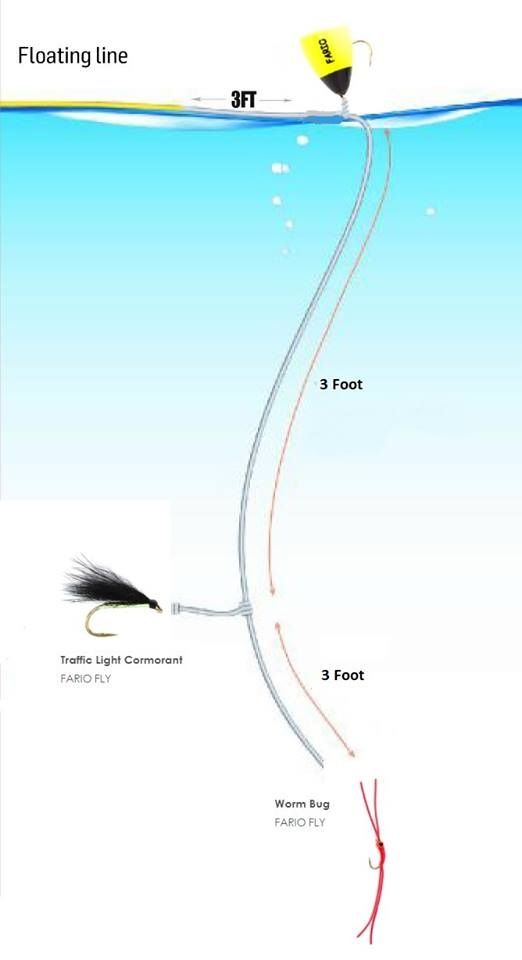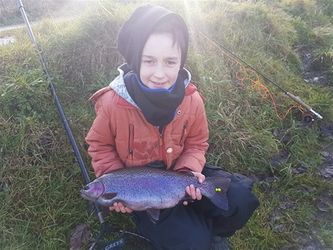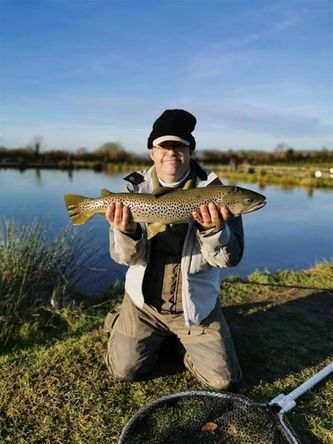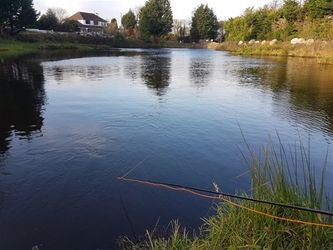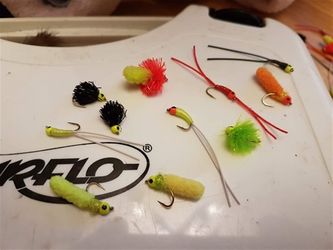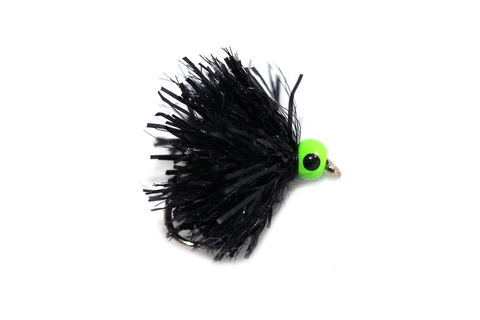Winter Bunging can be so enjoyable even on the coldest of days, it is a very simple method an expert or novice can catch using it.
Right what do we need, first things first, i know it's stating the obvious, nut a properly stocked fishery is a must. Sometimes such a thing is hard to come by in Southern Ireland. In winter you need to locate fish in order to fish the bung correctly, if the fishery has a very light density of fish, well you might aswell fish lures for a few pulls for the day, but you wont find me there.
How do we find the fish? Wind direction also helps you to track down the fish, on some fisheries, the fish will follow the wind on some fisheries and on others they will be at the back of the wind. It also depends if the wind is cold or warm, whether the fish will be on the lee shore or where the wind is blowing into. Then there are days that the fish do not want your offering moving at all and in this case you need to have the wind blowing over yout head.
Other areas I will try and find fish are along Islands, tight to rushes and lastly under your feet. The closer the bung is to you the more you can manipulte the way it floats and you can also read the bites better.
But for me the best area to find the trout is on the drop offs. These drop offs are usually tight to your bank. There is normally a shelf about 2 ft deep and five foot wide (put in for safety), then the shelf drops away and on some fisheries it will drop directly to 10ft. The fish cruise these areas all day long and you can pick them off one after the other, whilst keeping your indicator under control and with very little casting you can have a great day. Ideal for young and old alike.
WINTER BUNGING
Winter time is ideal to bring your kids out, as the fisheries should be well stocked. If the weather is not too bad you will be in for a very enjoyable day. Patrik fished with me all day during Clane Anglers Christmas Competition at Gary Hill Fishery, adults were on the top lake for the first half of the day and the kids were on the bottom lake. Patrik caught many fish employing a weighted a FNF hulk chewing gum, a weighted Black blob, Red Worm Bug and Chartruese and Orange Wozzits throughout the day. You can see he gets bored of using the same fly, even if its working.
On that particular day, the trick was to fish the back of the wind and to fish literally under your feet in the deepest water you could find. The water was about 6ft deep in front of us, so we set up Patriks rod with a black blob 2 ft under the bung and a Wozzit 3 ft further on the point. Total leader from the bung was 5ft. This was great for a while until he started getting two at a time. You cannot stop two rainbows going different directions on 6lb line. So we changed his set up to just one fly. While I was helping to measure another childs fish, Patrik got stuck into a lump and duly landed him without me even touching his fly rod or reel. After a spirited battle he guided a very plump trout into the waiting net. A proud moment for any Dad.
Patrik had a blast and he finished joint first in the Juvenile Competition. I only fished the afternoon and went from bungs to boobys, using Fnf hulk,White, Red Chewing Gum, and Red worm bug and Black`Cat Bug from Fario. And EGGSTATIX eggs from Deer Creek they worked well as the fishing slowed down in the afternoon, as did the new Fnf Creeper and it accounted for some bigger fish.
Patrik finished the day with a huge smile on his face and with lots of memories, the main aim of the day. He also returned home with selection boxes and other sweets courtesy of the Club. I was lucky enough to take home a turkey voucher for a Long fish caught on a sparkler booby. A great day had by all especially the kids.
Set Ups
Right the technical part of Bung Fishing or the choices you choose will always be decided by the weather conditions and your pegs or peg on the day.
I fish a winter League and the bung can come into play on certain days and venues. The bung has not really worked on the the previous 3 rounds or indeed last winter, but the bung came to the fore in the 4th round of the competition. I will go through that in a later blog- too little too late. Our competition allows 3 rods to be set up, I will always have 2 floaters set up at any competition, one with the bung and other for fishing buzzers or drys. I never leave the bung set up at home, it can catch you fish on the hardest day.
My set up is really simple, but there are a few things that I always do to ensure I get the most of my bung fishing.
1. I will use the lighest leader material I can get away with on the venue, as the water is so clear at this time of year on many fisheries. But there is no point hooking lots of fish and then loosing all of them from breakages, balance your tackle to the fish swimming in the venue. What brands of leader do I use, well we all have our own favourites, look at the diameter and compare your brand to other brands and you might be suprised. Honestly check it out, I was surprised.
2. In most competitions, rules state you cannot fish static flies, which means you cannot fish over depth. It is not safe for the fish as they will swallow the fly without any indication on your bung. I carry a really heavy bug that I use to check the depth within three rod lenghts of the bank and try and find a deepest area in that peg. Just the same as a coarse angler that plumbs the depth. On really cold days I will fish the deepest area I find in my peg, with the flys 4 to 6 inches off the bottom of the lake.
3. Knowledge is the key. The depth i fish will be determined by the latest reports from the fishery, practice days, and the weather,i have caught brilliantly just 2ft under the bung in winter and other days at 10 to 15ft. Yes the 15ft is for really deep fisherys and it is a struggle to control the fish for netting but it can be done, i have gone to 17ft from boats, now thats a pain but sometimes its the only option. Preparation is key. I will have several leaders made up on spools for the bung, I normall have a minimum of 2 for each depth ie 6ft, 10ft and 15ft all with flies on them. I can always cut them back if neccesary. Always retie your flies after every second fish as low breaking strain flurocarbon has a tendency to break at the knots after a few fish.
4. The next question is how many flys to tie under the bung. There is no set format, I like two and I will change as I see fit. One weighted fly will work one day two weighted flies another day. Other days the fish will flee from the noise, especially if the place is bunged a lot. On other venues they will come to the noise as they think they are being fed.
Folks catch in practice and will not change their method during thr match even if they are not catching. There is always a way of winkling a few trout out. A spider or cormorant on the top dropper and a weighted or unweighted fly beneath has a more subtle approach. I also fish single flys and this is a great technique on well bunged waters. Single Buzzers will get you that extra fish and sometimes all your fish on certain days.
5. Fish close in or far out. Unless I see fish in the distance up on top feeding I will always concentrate on the edges. As you can read your indicator better close in and you have more control on the bung. Out in the lake the bung is bobbing all over the place and you cannot see the little nudges on the bung. Also trying to strike at distance is hard and the conversion rate is 60 percent at best, that is 6 out of 10 takes. Whilst fishing tight as I call it, the conversion rate should be 80 to 90 percent
All Four Seasons in a Day
There are so many ways of fishing the bung. And in winter the weather is so unpredictable as you can get all seasons in 1 day.
I find the windier it is the higher that I seem to find the fish. So fishing 2ft to 4ft under the bung with a single fly seems to be the way to go. Fly choice is up to you, if there is any fly life about I would always start with buzzers, if I do not get much interest I start using various worm or egg pattens.
When it is windy, I let the bung swing around naturally for the first number of casts and if this does not work I would try casting short and holding the bung back trying to prevent the bung from moving too much. Somedays they want it moved, somedays they do not.
In calm condition I would start fishing close to the bank and work my way out into the lake. Going to maybe 4 rod lenghts from the bank and repeating the process changing depths as you go trying to find the preferred depth that the fish wish to feed in. When fishing calm condition I like to tweak the bung three to four times during a 3 to 4 minute cast. Trying to get a reaction take from the fish. This can work a treat on certain days.
Reading the bites correctly will also put more fish on the bank and is probably the most important part of bung fishing. The bung going straight down is the easiest one to convert. But the fish can suck in and spit the fly quickly on other occassions and little wobbles, twitches and nudges of the float can tell you fish are present, but hitting such a bite will neary always result in freash air.
I always wait for the bung to slowly go left or right or for the bung to slowly just go under. If the bung goes down enough that the top of the bung is covered with water I strike. The size of the bung can also play a big part, I have used many manufactured and homemade bungs over the years, but after finding the Fario Bung I now use nothing else. The range in colours help you see it in all light conditions also.
I hope this helps, as a lot of folks get frustrated when fishing the bung, as I did when I first started, wait for the right take and hopefully it will put fish in the net.
Flies, Materials, Lines
So how do you get started - your lake rod is fine, I prefer a 10ft 7weight. A good floating line- again I prefer the fnf floater for is subtlety, no memory and is just a pleasure to use. Most guys tie, Deer Creek do a lovely Eggtastix for all your egg patterns, Fnf with their different worms, Chewing gum, jumbo, Predator and the New Creeper. All great on their day. You won't be dissappointed and you can also mess about with them all and develop new patterns. I have put links to all their products.
I have done very well on all the above materials, but if you cannot tie well just go to Fario, where I get my bungs and go through their quality selection of flys. I understand a lot of anglers do not fish the puddles but once or twice a year and having all the tying material just is not ecomnomic. I have added links to all the flys I use so you can get to them easily.
Get Out And Try It
Why leave your rods collecting dust all winter, the fisheries cannot stay open without customers coming through their doors. These fisheries stock their fish on a regular basis and if you don't make the effort there will be no fisheries left to go to the next time you feel like a winter foray. We have lost 4 fisheries in the same number of years in the south of Ireland. So get yourself and your family out and make some memories!
Comments
Sean Goulding
17.02.2020 17:22
Too scientific for me big fella
Aidan
16.02.2020 23:49
Well written Denis, loads of tips there for improving catch rates. Fario bungs are excellent, very easy to cast, see on the water and sensitive to bites. Not be long to Patrik is out for the spent 👍
denis
17.02.2020 08:11
i am sure he will be, thanks Aidan
Latest comments
19.05 | 05:47
Hi Denis
Good meeting last night, and enjoyed reading your blog. Felt I was on the lake with you. Great work
02.05 | 20:42
Hi Dennis loved the article straight to the point .just wondered will the trout feed on the small buzzers all year ?
06.04 | 11:57
Cant wait to read this
01.03 | 03:03
glad u enjoy, ty, will be back when the fishing returns
Share this page
